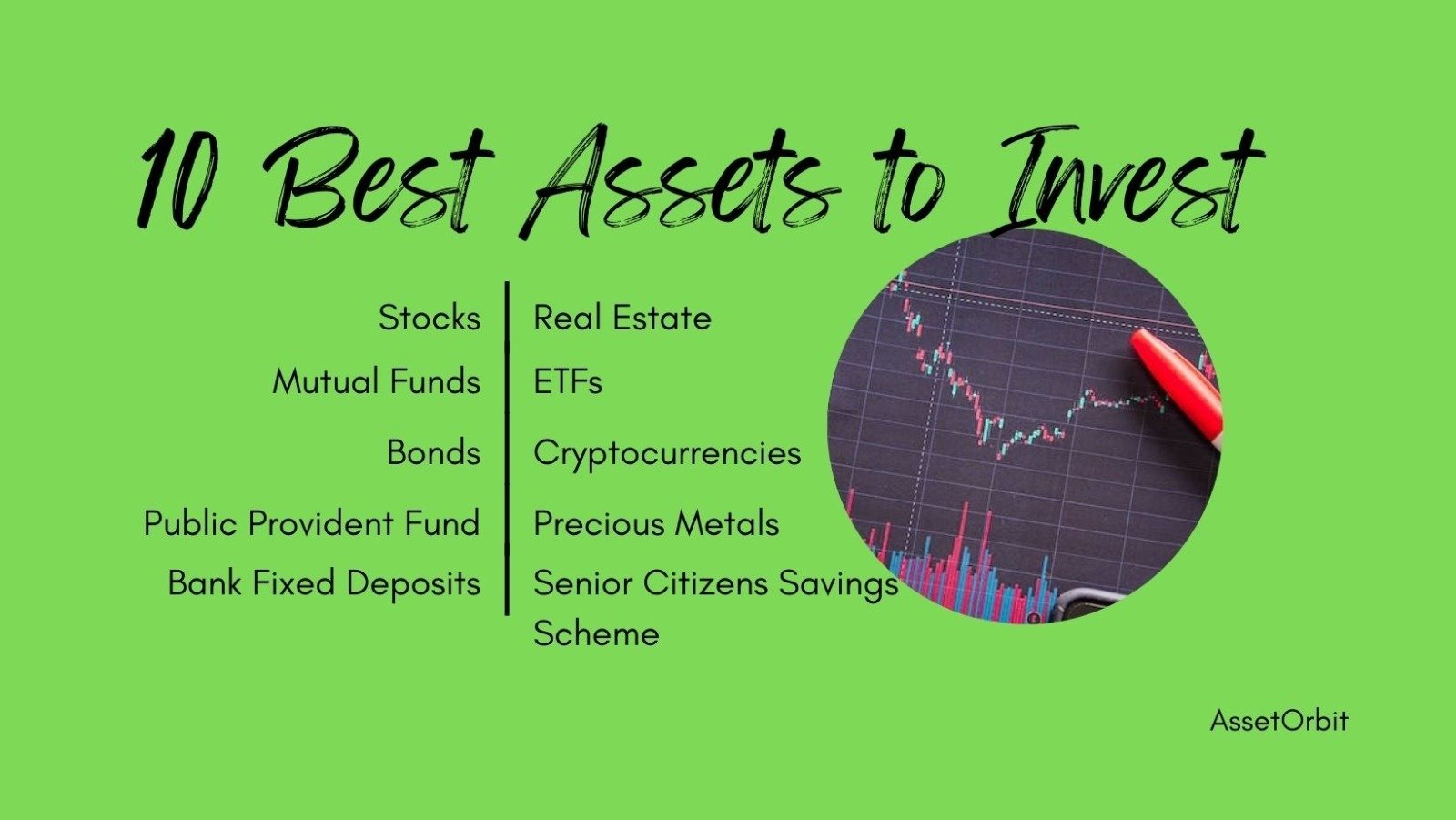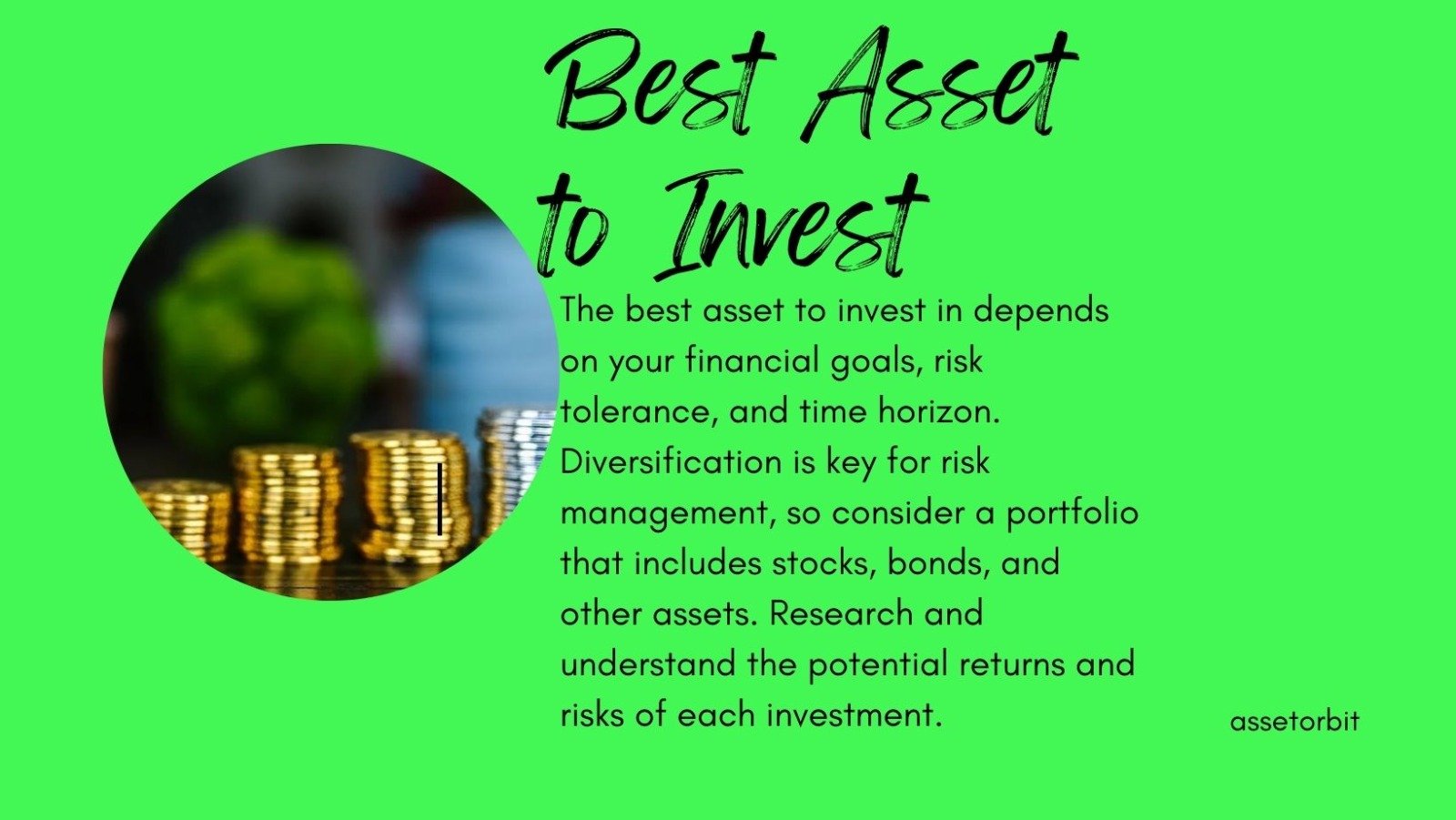Assess an investor’s abilities, risk tolerance, and financial goals to choose the best investment asset. Stocks, mutual funds, ETFs, bonds, cryptocurrencies, and real estate offer long-term capital appreciation and dividends. A balanced portfolio of stocks, bonds, and low-risk assets can provide risk-adjusted returns.
In Short
When finding the best investment path, it is critical to consider the investor’s capabilities, risk tolerance, financial goals, and other factors. However, the best course of action is to invest in both real estate and stocks. Although both investments have the same components of capital, risk, and return, they are diverse in their ways. Real estate provides the benefit of real assets, with the possibility of long-term appreciation and rental income. Stocks, on the other hand, provide ownership in a company, providing for profits through capital appreciation and dividend payments. Despite these distinctions, both channels generally lead the way when it comes to wise investing.
If you want to diversify your portfolio, you should consider investing in both real estate and stocks. Diversification spreads risk and increases return potential. So, whether you’re seeking stability or growth, including a mix of these assets in your investment portfolio might be a good decision.
10 Best Assets to Invest

1. Stocks
Stocks offer long-term growth potential, making them a superior investment option. They provide ownership in a company, allowing investors to participate in its profits and success. Some stocks also offer dividend income, providing a regular income stream, making them appealing for those seeking a combination of capital appreciation and income.
Before investing, educate yourself on stock market basics, investment strategies, and stock analysis. Create a diversified portfolio to spread risk and minimize sector impact. Maintain a long-term perspective to ride out market fluctuations and benefit from market growth. Open a brokerage account to buy and sell stocks, using online platforms with user-friendly interfaces and tools.
Stocks can benefit from global economic growth, as companies may experience increased sales and profits. Technological advancements drive growth across various sectors, making investments in companies at the forefront of innovation potentially rewarding. Additionally, stocks serve as an inflation hedge, contributing to the rising value of companies and their stocks. By monitoring market trends and opportunities, investors can identify potential growth prospects.
2. Real Estate
Real estate offers tangible assets like residential, commercial, and rental properties, providing concrete value. Over time, property values can appreciate, making them attractive to long-term investors. Rental income from real estate properties provides steady cash flow, making it an appealing option for those seeking regular returns.
To invest in real estate, research local markets, diversify your portfolio, explore financing options like mortgages or real estate crowdfunding platforms, and ensure efficient property management. Factors such as location, neighborhood trends, and development potential can significantly affect your investment. Additionally, investing in residential properties, commercial real estate, or real estate investment trusts (REITs) can assist in managing risk and improving returns.
Population growth, urbanization, infrastructure improvements, and inflation are factors that can drive real estate values upward. Population growth increases demand for housing and commercial spaces, while urbanization trends and development projects can impact real estate values. Investing in areas with planned development offers future appreciation. Real estate is a hedge against inflation.
3. Mutual Funds
Mutual funds offer professional management, diversification, accessibility, various funds, liquidity, transparency, systematic investment plans (SIPs), risk and return, expense ratios, and tax efficiency. They are managed by experts who make investment decisions on behalf of investors, aiming to achieve the fund’s objectives. Mutual funds provide instant diversification by investing in various securities, reducing the impact of poor performance from a single investment. They are suitable for both novice and experienced investors, with various funds including equity, bond, index, sector, and balanced funds. They also provide liquidity, transparency, and systematic investment plans (SIPs), promoting disciplined investing.
4. Exchange-Traded Funds (ETFs)
Exchange-Traded Funds (ETFs) are investment funds traded on stock exchanges, offering diversification, transparency, liquidity, lower costs, flexibility, intraday trading, various asset classes, tax efficiency, accessibility, and real-time pricing. ETFs typically track a specific index or basket of assets, providing instant diversification. They also offer liquidity and lower costs and can be bought and sold at market prices. ETFs are often more tax-efficient than mutual funds, as they require less active management. They can be bought through brokerage accounts, making them accessible to a broad range of investors. Real-time pricing provides investors with up-to-date information on their investments.
5. Bonds
Bonds are debt securities that provide a loan to a borrower, typically a government or corporation. It offers fixed income, principal and maturity, safety and risk, credit ratings, diversification, liquidity, and interest rate sensitivity. Government bonds are generally considered safer than corporate bonds, but factors like credit, interest rate, and inflation risk should be considered. Bonds can be bought and sold in the secondary market, providing liquidity to investors. Interest rate sensitivity is inversely related to bond prices, with higher bonds tending to fall and vice versa. There are various types of bonds, including callable, coupon, zero-coupon, and inflation-indexed bonds.
6. Cryptocurrencies
Cryptocurrencies are digital or virtual currencies that use cryptography for security and operate on decentralized networks, typically based on blockchain technology. They operate on decentralized networks, with no central authority governing them. Blockchain technology ensures transparency, security, and the immutability of transaction histories. Cryptocurrencies have a limited supply, creating scarcity and influencing value appreciation. They are often considered both investment and speculative assets. Initial coin offerings (ICOs) and tokens are fundraising events for new cryptocurrencies or tokens. Regulatory environments vary by country, and security risks include hacking and fraud. Blockchain technology has applications in finance, the supply chain, and healthcare. The long-term viability of cryptocurrencies remains a topic of debate, with supporters believing they represent the future of finance, while skeptics question their stability and regulatory challenges.
7. Public Provident Fund (PPF)
The Public Provident Fund (PPF) is a government-backed long-term savings and investment scheme in India, offering tax benefits, a fixed interest rate, a contribution limit, and flexible frequency. It allows investors to contribute a minimum of INR 500 per year and a maximum of INR 1.5 lakh per financial year. Partial withdrawals are allowed from the 7th year onward, subject to certain conditions. PPF also provides a loan facility from the third to the sixth year, with interest typically lower than the PPF interest rate. PPF accounts can have nominees and are transferable across banks or post offices. With an initial lock-in period of 15 years, PPF is often considered a suitable retirement planning instrument due to its long-term nature, tax benefits, and fixed interest rate.
8. Bank Fixed Deposits (FD)
Bank fixed deposits (FDs) are a popular investment option where individuals deposit money with a bank for a fixed tenure at a predetermined interest rate. FDs offer guaranteed returns, making them low-risk but generally lower compared to riskier investments like equities. Premature withdrawals can result in penalties, and FD holders can nominate a beneficiary in case of the depositor’s death. Banks often provide an auto-renewal option, renewing the FD for the same tenure at the prevailing interest rate. Tax implications include taxable interest earned, and liquidity is a concern. The Deposit Insurance and Credit Guarantee Corporation (DICGC) usually insures the principal amount invested in FDs, providing additional security.
9. Precious Metals
Precious metals like gold and silver are a traditional investment strategy to preserve wealth and hedge against economic uncertainties. They are a store of value, a safe-haven asset, and have industrial uses. However, prices can be volatile due to factors like economic data, geopolitical events, and currency fluctuations. Investors should be prepared for price fluctuations, consider physical storage and costs, and consider tax implications. Market trends and sentiment also influence precious metal markets. To make an informed investment decision, assess individual goals, risk tolerance, and the overall economic environment; consult financial professionals; and stay informed about market trends.
10. Senior Citizens Savings Scheme (SCSS)
The Senior Citizens Savings Scheme (SCSS) is a government-backed savings scheme in India for senior citizens aged 60 or older. It offers a maximum investment of INR 15 lakh with quarterly interest rates. The scheme has a fixed tenure of 5 years, which can be extended for an additional 3 years. Premature withdrawals are allowed after one year, subject to penalties. SCSS investments qualify for tax deductions under Section 80C of the Income Tax Act. Accounts can be transferred between banks and post offices.
Best Asset to Invest in Right Now
The choice of an investment asset depends on factors such as an individual’s financial goals, risk tolerance, and market conditions. Stocks offer potential for high returns, liquidity, diversification, dividend income, and global economic growth. On the other hand, real estate is a tangible asset with intrinsic value, stability, appreciation, income generation, and an inflation hedge. It can contribute to diversification and reduce overall risk.
To make an informed decision, consider market conditions, investment horizons, risk tolerance, and diversification. Stocks are more suitable for long-term growth, while real estate aligns with those seeking stability and income. Risk tolerance is also important, as stocks generally come with higher volatility, while real estate may be subject to market fluctuations and property-specific risks. A well-diversified portfolio may include a mix of stocks and real estate to spread risk.
To make the best investment choice, it is essential to conduct thorough research, seek professional financial advice, and align investment decisions with individual circumstances and goals. Both stocks and real estate can be valuable components of a diversified portfolio, and the “best” choice depends on the investor’s specific financial objectives and risk preferences.
Best Assets to Invest in With Little Money
Stocks offer numerous benefits for individuals with limited funds, including affordability, diversification, long-term growth potential, liquidity, access to blue-chip companies, educational opportunities, dollar-cost averaging, online brokerage platforms, dividend income, and flexibility in investment strategies. Stocks can be purchased in small denominations, allowing investors to participate in the market with limited funds. Fractional shares allow investors to own a portion of a high-priced stock with a small investment, democratizing access to a diverse range of stocks. Diversification helps spread risk and can be achieved with relatively small amounts of money. Stocks are highly liquid assets, making them easy to buy or sell and providing flexibility for investors. Online brokerage platforms have lowered transaction costs, making it more cost-effective for investors to buy and sell stocks with small amounts of money.
Best Assets to Invest in During a Recession
During a recession, investors often seek assets that provide stability, capital preservation, and potential growth opportunities. Some asset classes to consider include government bonds, gold and precious metals, dividend-paying stocks, defensive stocks, real estate investment trusts (REITs), Treasury bonds and TIPS, cash and cash equivalents, utility stocks, high-quality corporate bonds, diversified mutual funds and ETFs, and quality blue-chip stocks.
Government bonds are considered safe-haven assets due to their fixed interest rate and return on principal at maturity. Gold and precious metals have historically served as a hedge against economic uncertainties, retaining value and even appreciating during challenging periods. Dividend-paying stocks provide a source of regular income during a recession, contributing to overall returns. Defensive stocks belong to industries less sensitive to economic cycles, such as utilities, healthcare, and consumer staples, with stable cash flows and potential resilience during economic downturns. Real estate investment trusts invest in income-generating real estate properties, while Treasury Inflation-Protected Securities (TIPS) offer protection against inflation.
Cash and cash equivalents provide liquidity and flexibility, allowing investors to take advantage of opportunities during a recession. Utility stocks offer relative stability due to the need for essential services like electricity and water. High-quality corporate bonds from financially sound companies can be attractive during a recession, while diversified mutual funds or exchange-traded funds (ETFs) offer broad exposure and risk mitigation.
Best Alternative Assets to Invest
Diversifying an investment portfolio with alternative assets can offer unique returns and act as a hedge against market volatility. Popular alternatives include real assets like real estate, precious metals, and commodities; private equity and venture capital investments in non-public companies; decentralized cryptocurrency; and collectibles like art, rare wines, and vintage cars. However, it’s crucial to conduct thorough research, assess risk tolerance, and align these investments with specific financial goals. Diversifying across traditional and alternative assets can enhance portfolio resilience in different market conditions.
Best Assets to Invest in for Beginners
Beginners can create a diversified investment portfolio by combining stocks, bonds, and low-risk assets. Stock market index funds (ETFs) offer exposure to various stocks without extensive stock picking, while bond funds provide stability and regular interest income. Savings accounts or money market funds offer a safety net for short-term needs. Real Estate Investment Trusts (REITs) allow beginners to invest without owning physical properties. Education and research are crucial for informed decisions, and dollar-cost averaging strategies reduce market fluctuations. An emergency fund is essential for unexpected expenses.
Final Thoughts
Real estate and stocks are strong contenders due to their value, appreciation potential, and growth potential. Successful investing requires a well-thought-out plan, diversification, informed decision-making, and staying informed about market trends. A balanced approach combining different assets offers effective risk-adjusted returns. Seeking advice, continuously learning, and regularly reviewing strategies are essential for long-term financial success.
FAQ
What investment is 100% safe?
Achieving a risk-free investment is challenging due to the inherent risk in all investment options. Even low-risk options like savings accounts and government bonds can face challenges. Diversifying portfolios across asset classes can mitigate risk, but investors should avoid schemes offering guaranteed returns. A balanced approach with financial advice is crucial for navigating the investment landscape.












Leave a Reply